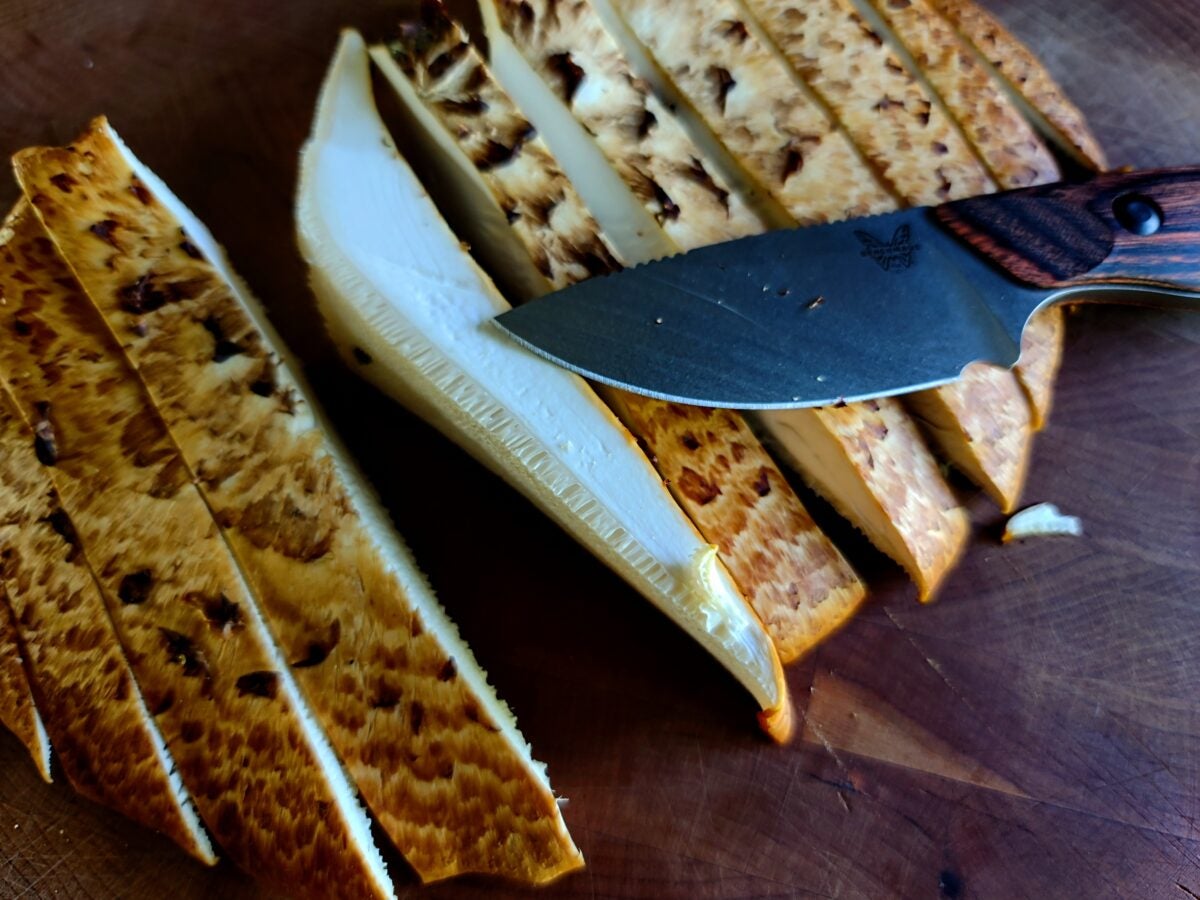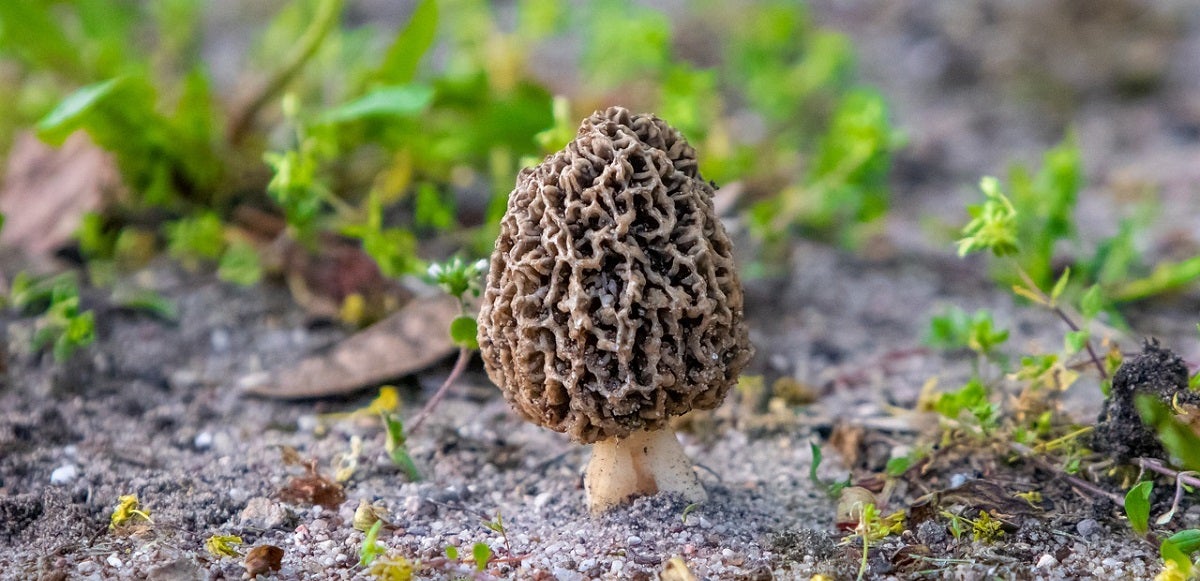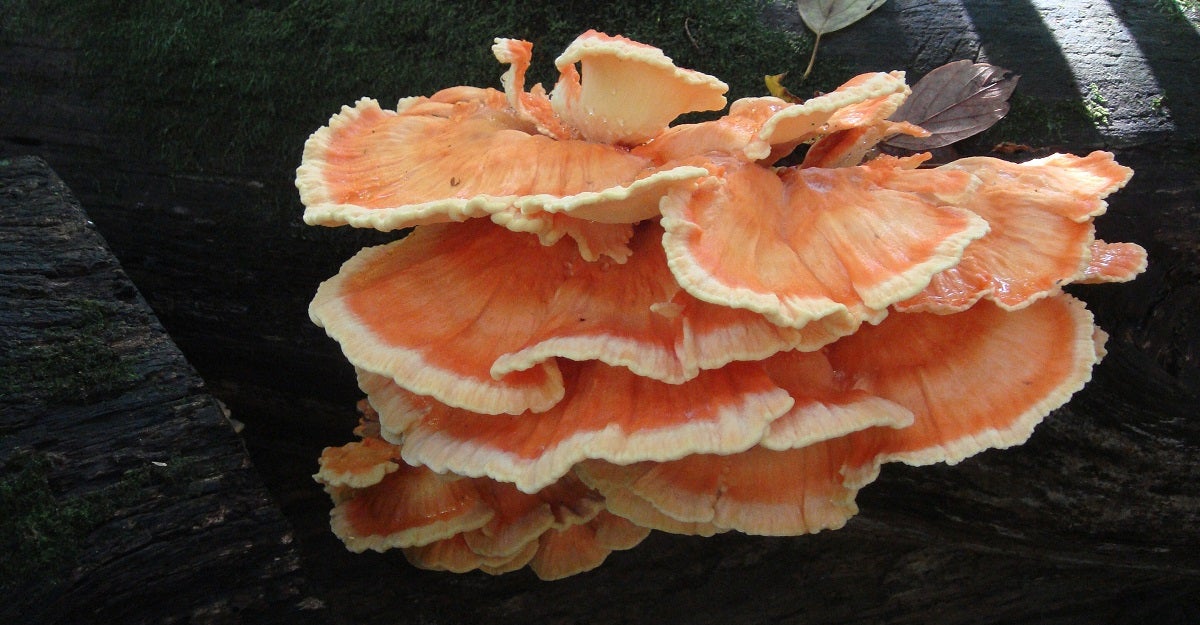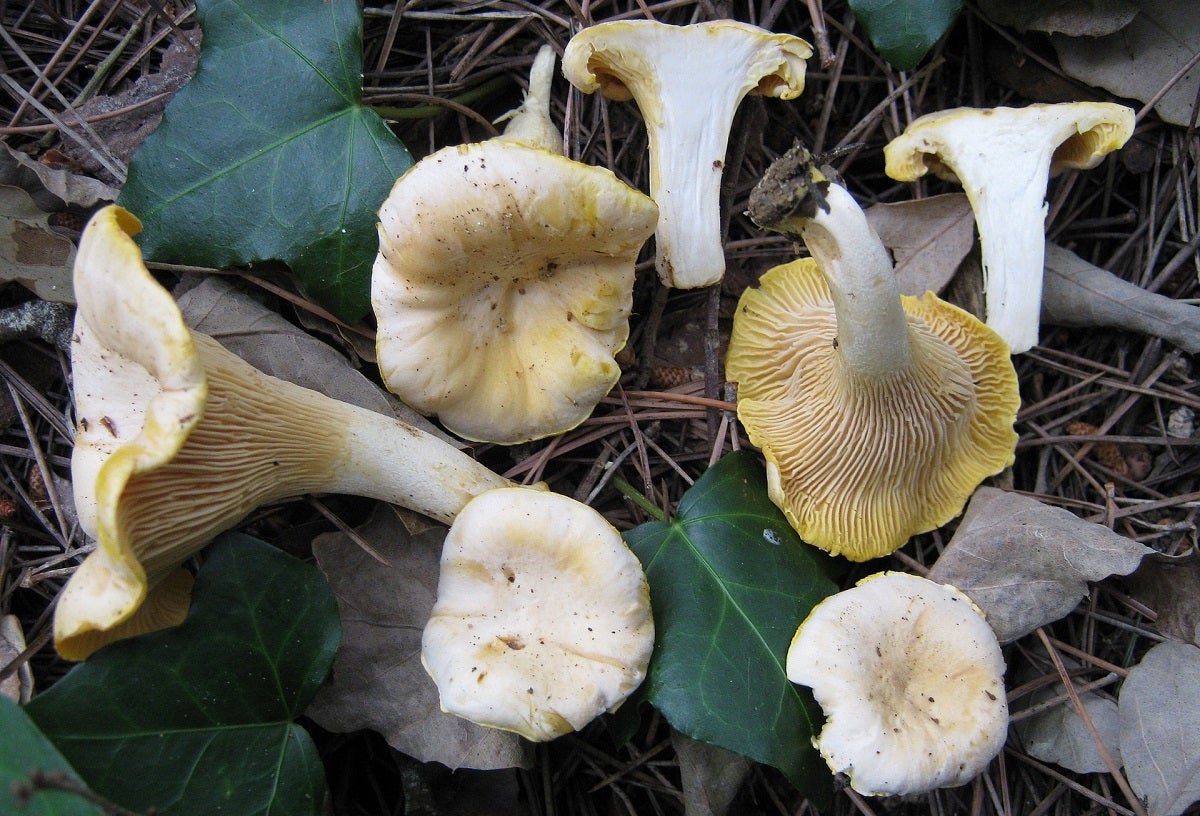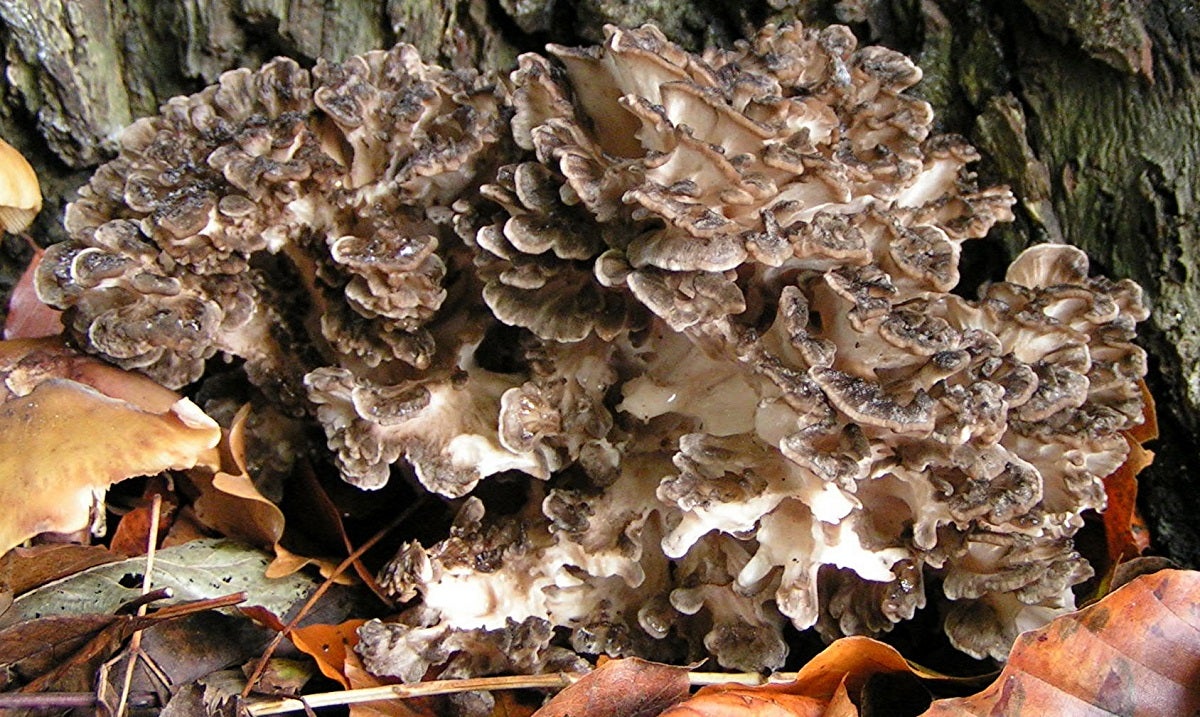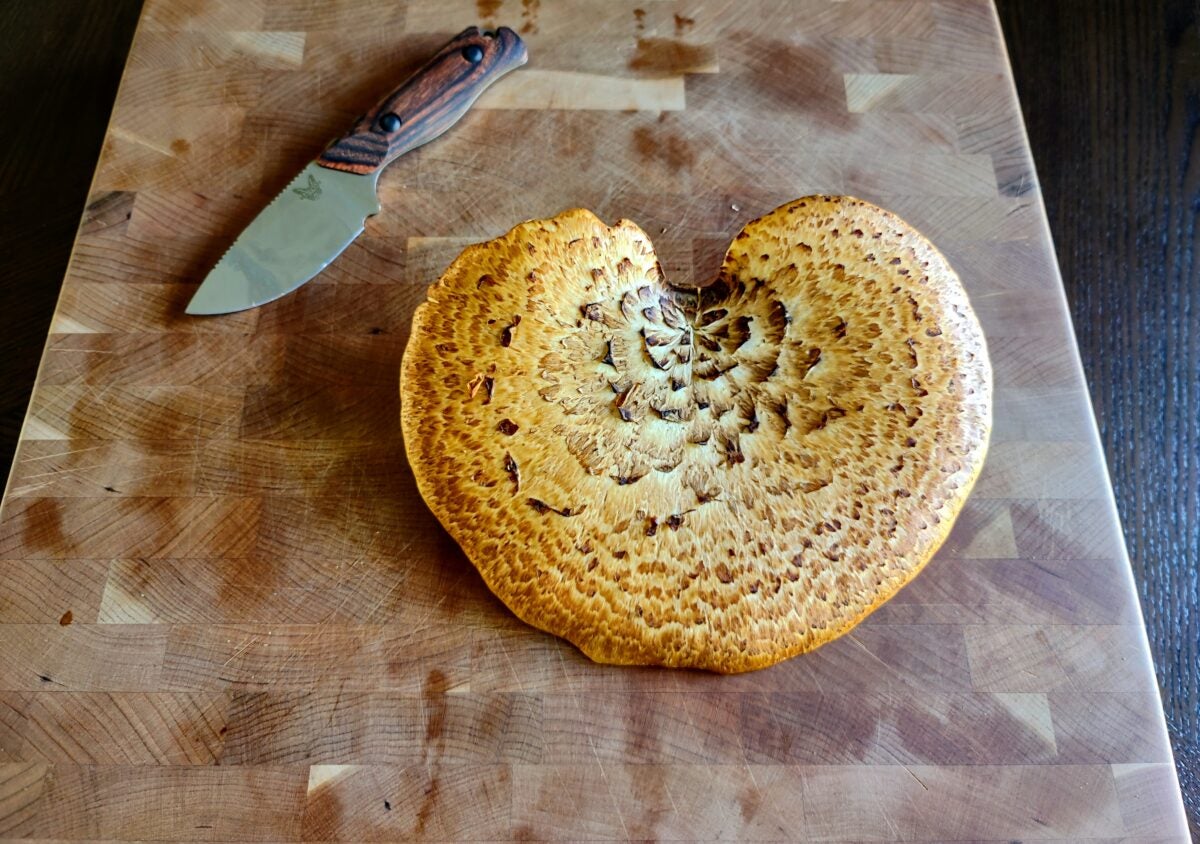Foraging Mushrooms for your Homestead: 5 That Won’t Kill You!
Adam Scepaniak 04.22.25
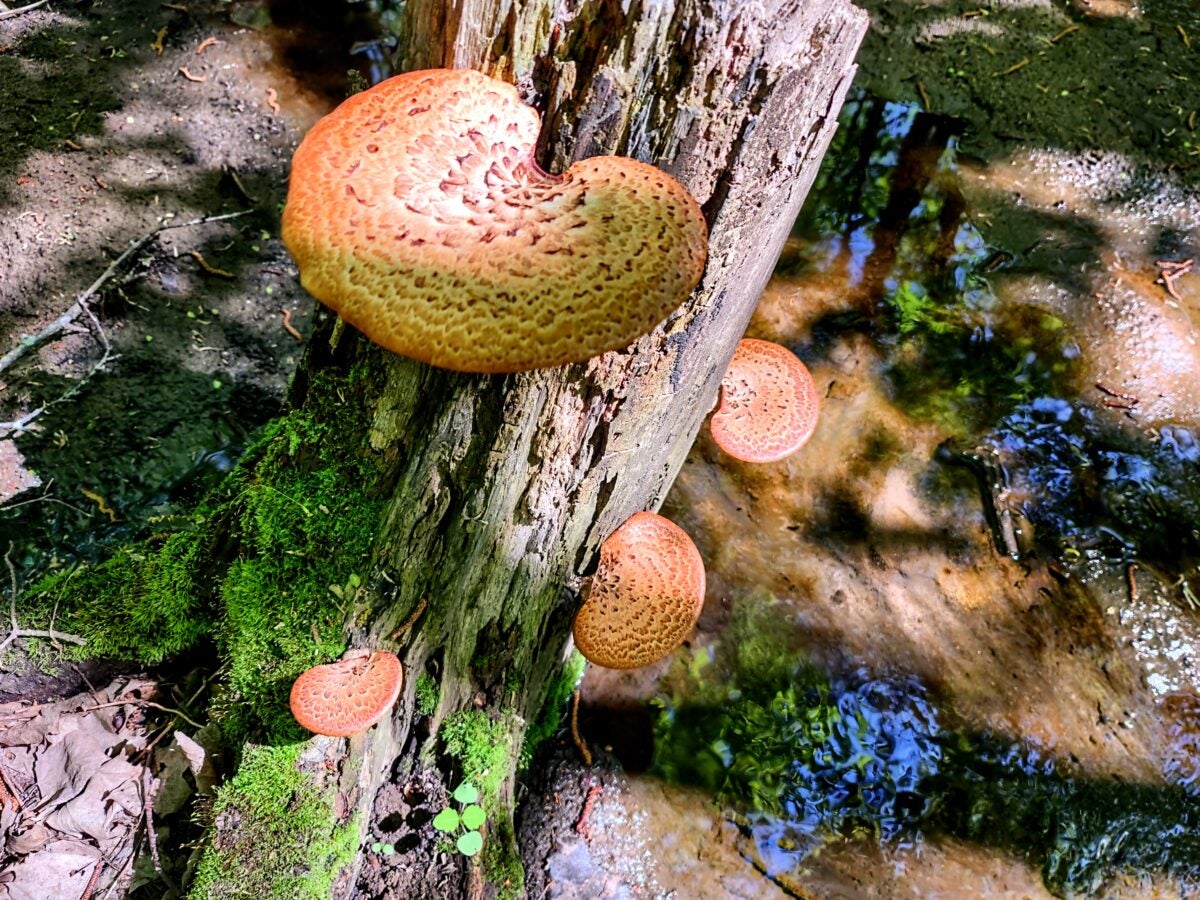
Once all of winter’s snow recedes and spring begins to pop there are new lush, beautiful plants growing everywhere. Some are straight poisonous while others are delicious and pair perfectly with steak and other meals you might want to serve up with friends and family. If foraging mushrooms is on your spring to-do list, we share with you 5 mushrooms that won’t kill you and are actually quite delicious! Check these out and don’t be afraid to bend over, collect some, and toss ’em in a frying pan.
Mushroom Coverage on AllOutdoor
- Home on the Range #040 – Pheasant Back Mushrooms (Dryad’s Saddle)
- “Can I Eat It?” Part 2: Common Edible Wild Mushrooms
- AO Review: Fringe Protein Bars – Mushroom Infused On-the-Go Snacks
- Survival Mushroom Tinctures
Foraging Mushrooms – Pheasant Back (Dryad’s Saddle)
A good, delicious, ripe pheasant back mushroom will be white or creamy on the underside with a fresh looking porous bottom. Like many mushrooms, pheasant back mushrooms have a “window of opportunity” where they go from being harvest-able to unpalatable.
When it comes to finding pheasant back mushrooms they are most predominantly found leaching – or absorbing nutrients – off of elm trees that are failing (soon to be dead), or already dead elm trees. People will frequently find them on dead stumps or fallen logs with the mushrooms far too gone. While this might be disheartening if you are looking for a compliment to your evening’s dinner, it is important to note the location for next year when the conditions are prime for mushroom propagation again.
Caution: Never harvest or eat overripe mushrooms!
Foraging Mushrooms – Morel (Morchella)
The ripply, wrinkly, cone-shaped Morel is a vitamin-packed, nutrient-dense mushroom that is filled with a bevy of calcium, iron, potassium, and natural sugar. Wild Morels can provide a crucial energy boost, and their distinctive shape and color makes them easy to spot. Morels are commonly found near the bases and roots of fallen hardwood trees, especially oaks, elms, ashes, and aspen trees. They grow nearly everywhere throughout the continental United States with higher concentrations in the Midwest, Northeast, and Mid-South. Morel mushrooms – or sometimes called Dryland Fish in the south – like to pop up frequently among rotting and dying hardwoods, with sprouts occurring between early April and mid-May.
Caution: False Morels are a real thing and are poisonous! Make positive identification of true morels before eating!
Foraging Mushrooms – Chicken of The Wood
When foraging mushrooms, and specifically hunting for Chicken of the Wood, they can be pretty easy to spot when they are ripe as they are a vibrant orange color. This tree-hugging fungus gets its name from its uncanny, strangely-accurate texture: it really does taste – or at least feel – like chicken meat (just trust us on this one). Chicken of the Wood will grow exclusively along the low trunks of hardwood trees, particularly where a trunk may have suffered damage and lost bark. The Chicken of The Wood mushroom forms overlapping shelves of broad, rippled heads. Mature specimens’ shelves sport an orange center tinged with a creamy or canary colored rim. Younger growths may appear with a sulfur-like or yellow tint. Wait until you get that unique orange color to ensure this mushroom is properly ripe.
Foraging Mushrooms – Chanterelle
One of the most popular edible wild mushrooms, the yellow- or cream-colored, trumpet-headed Chanterelle is easy to find throughout North America from spring to fall. Chanterelles grow in old forests and are usually found at the bases of maple, beech, poplar, birch, pine, fir, and oak trees. They tend to grow in brightly colored clusters and favor moist soil near lowlands and waterways.
Wild, golden chanterelle mushrooms can be quite the delicacy in restaurants as they can run anywhere from $20 – $50 per pound. These high prices can only be commanded if they are of the golden variety and are superbly clean, ripe, and beautiful in appearance. Don’t expect to catch $50/pound pricing at your local farmer’s market.
Foraging Mushrooms – Hen of the Wood
No, that’s not a cluster of pine cones on the ground; that is a Hen of the Wood mushroom. This broad, low-growing fungi might be mistaken as a cluster of pine cones. It, like the Morel, grows near old oak and maple trees, often sprouting at the immediate base, above the roots. Indigenous throughout North America, the Hen of the Wood mushroom can be found sprouting in late summer to early fall, with higher concentrations in the Northeast. Hen of the Wood boasts one of the largest fruiting bodies of all fungi – up to 40 inches in diameter and weighing up to 50 pounds – providing loads of raw nutrients.
One cup of the stuff provides about 22 calories, with high concentrations of B vitamins, vitamin D, potassium, fiber, and natural sugar. Over 70% of this fungus is pure carbohydrate, making it a true super food that can provide plenty of energy when you’re running low on civilized foodstuffs.
Caution: As “dirty” as this mushroom might appear, be sure to check that is clean and not wet or moist with debris.
Foraging Mushrooms – Departing Thoughts
As always, let us know all of your thoughts about all of the mushrooms that we discussed here today: Morels (Dryland Fish), Chicken of The Woods, Chanterelles, Hen-of-The-Woods, and Pheasant Back Mushrooms (Dryad’s Saddle). Would you be bold enough to venture out into the woods and going foraging mushrooms for one of your next meals? We always appreciate your feedback.
